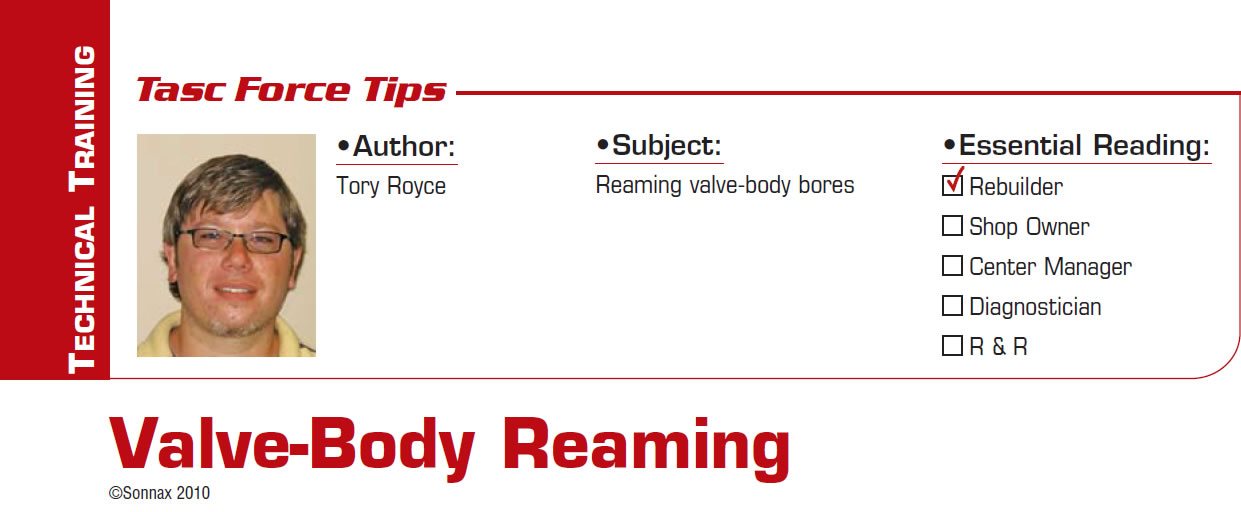Manual-Valve Confusion
While doing research on the Aisin AW six-speeds, I found that the Ford/Mazda (TF81-SC) manual valve and the Volvo (TF80-SC) manual valve are almost identical. Both look the same at a glance, but up close there are critical differences. I also noticed that these two valves are just about the same as an AW55-50 manual valve. All three have the same outside diameter of 0.471 inch. Even the “Z” links look the same until you lay them side by side (do not interchange the valves or the “Z” links).
Wave Forms Provide Key to Diagnosis
I’m sometimes asked why I take on some vehicles that require more time to fix than I can charge for. My answer is, “because I like the challenge”; besides, you get to learn things you probably wouldn’t have an opportunity to see otherwise. Let me use this 1934 Ford Tudor Sedan (Figure 1) with a late-model GM drivetrain as an example.
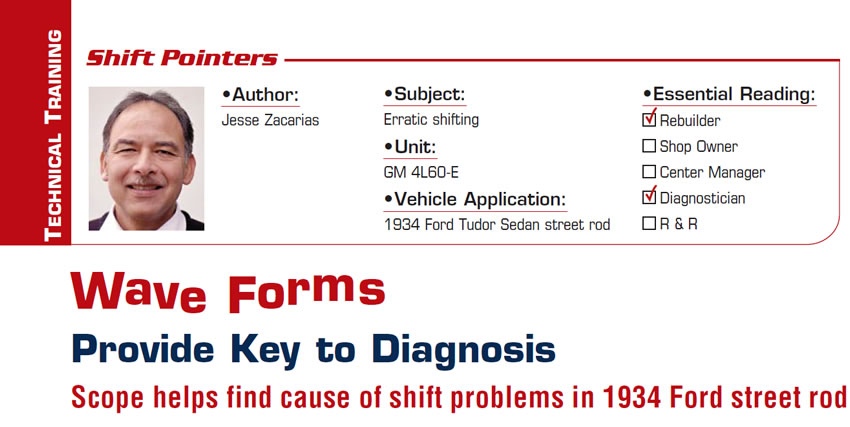
Upgrading the Flat TCC Pistons for the 4L30-E & 4T65-E
The 4T65-E and 4L30-E share a number of issues related to the torque-converter clutch (TCC). Both transmissions are notorious for their TCC-application and shudder problems. A root-cause analysis of each application yielded similar results.
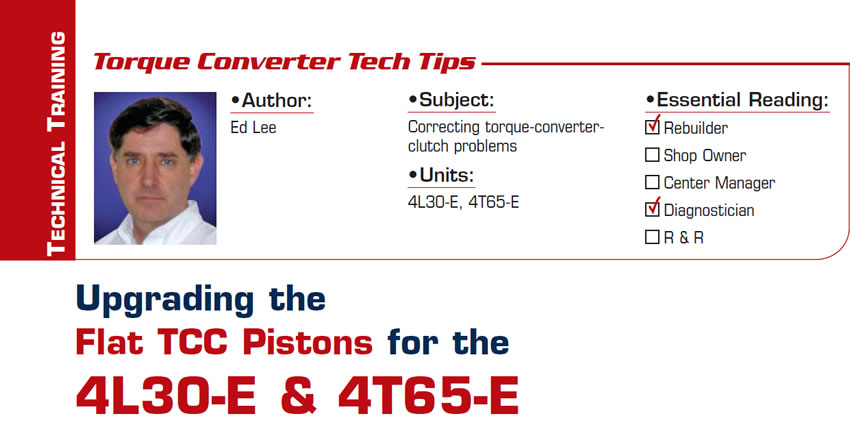
GM’s 2MT70
Getting into the valve body is all we need to do to finalize our brief look at GM’s front-wheel-drive two-mode hybrid transmission.
If you recall from the first article, the TCM and solenoid-body assembly is first removed from the transmission followed by the plate attaching the assembly to the valve body (figures 1, 2 and 3).
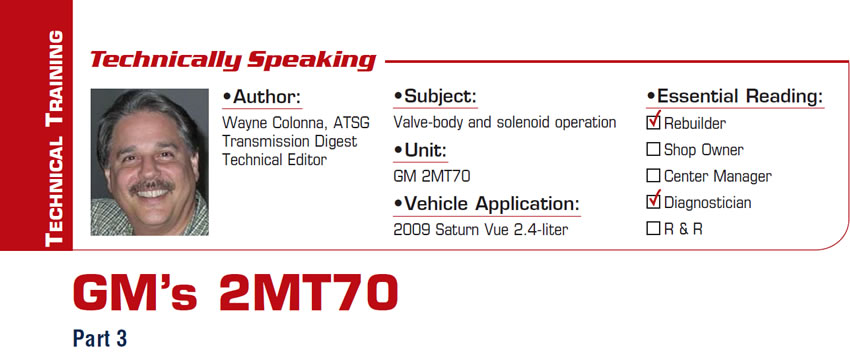
What the …!
In essence, this equates to a hydraulic or mechanical problem in the intermediate-clutch circuit, which could mean that once second gear is commanded, the TCM does not see the correct second-gear ratio.

Premature Failure of Mitsubishi Galant Ring Gears
Torque-converter rebuilders have been reporting an increase in the number of failed ring gears on Mitsubishi Galant converters. Most of the failed ring gears are found on 2006-08 vehicles equipped with V-6 engines, and the failures seem to occur soon after the vehicle’s starter has been replaced.
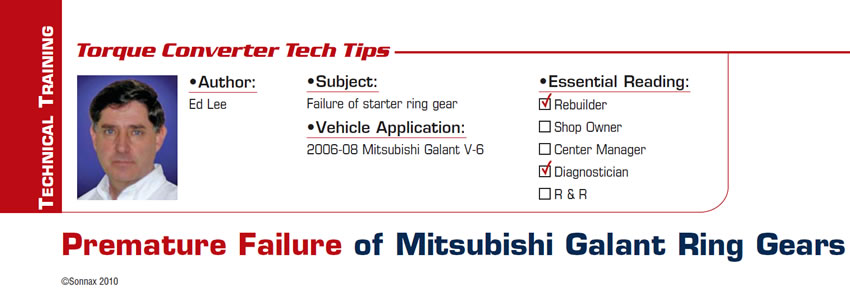
Cast-Iron Powerglide Leaks
The cast-iron Powerglide® transmission shares one distinction with the motor cars and motorcycles manufactured in the U.K: They all leak. Any transmission-shop owner who is being honest with himself will admit this. Most are not surprised to see the owner of an early-model Chevrolet returning to their shop with a piece of cardboard adorned with a large red spot.
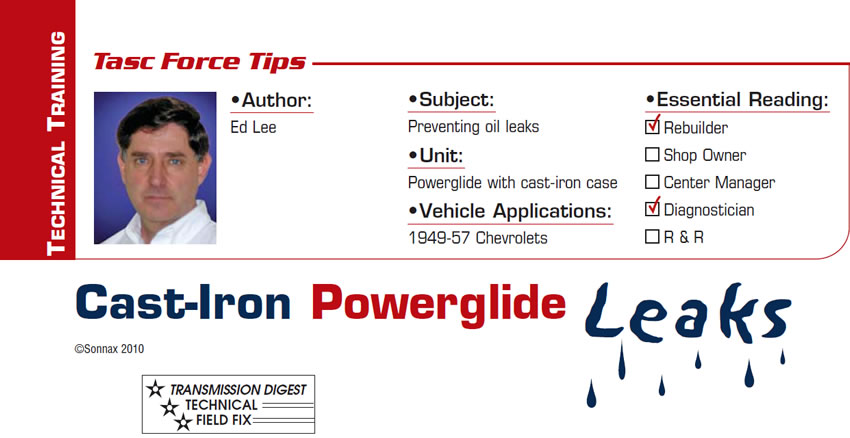
GM’s 2MT70
In the June 2010 issue of Transmission Digest we left off looking at the 2MT70 with having gone as far as removing the valve body. Getting back to this unit to have a brief look at the inside of it, with the rear covered removed the drive motor/generator assembly unit B becomes immediately visible (Figure 1). Inside the cover are the fourth clutch and the generator-position sensor.
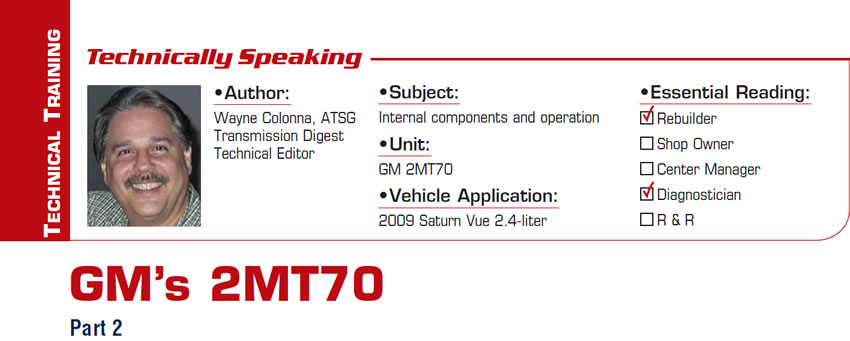
4F-27-3-Neutral-Hike!
A frequent call we receive on ATSG’s technical hotline with the 4F27E (FN4A-EL) transmission is a neutralizing shift going into fourth gear. The reason why it is such a frequent complaint is that there are several causes of this malfunction.
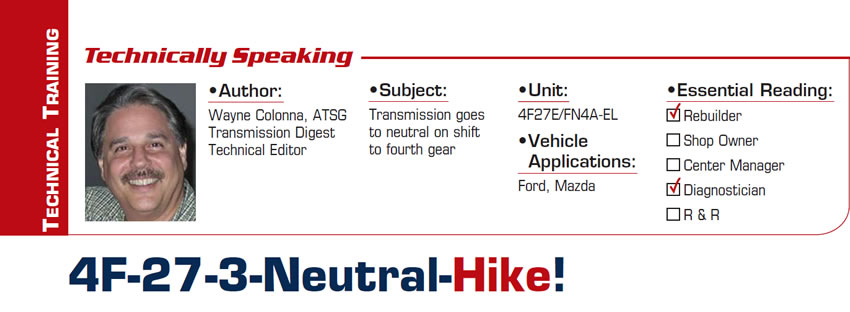
A Box, in a CAN
One of our customers rebuilt an AW55-50 and had repeat complaints of a 2-3 shift flare. Everything on the transmission side of this complaint was corrected and rechecked. Everything on the valve-body and control side of the complaint was done, checked, verified and looked at again. Resets/relearns – you name it, they tried it. Eventually another valve body was tried, but the car continued to have the 2-3 flare.
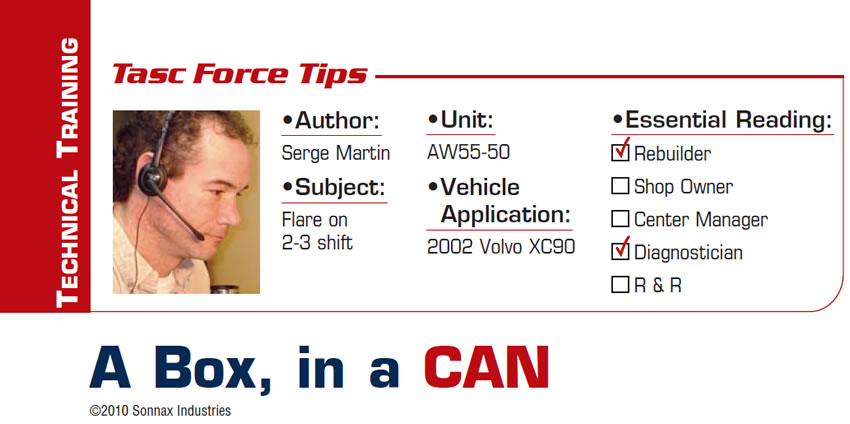
BMW X5 Short Circuit
Doing electrical work can be interesting at times, and you never know what you will discover to be the cause of the problem. For example, a customer brought us his 2001 BMW X5 with the 5L40-E automatic transmission in failsafe. Another shop had worked on the engine and told him that the problem was with the transmission. When we checked for codes it had multiple codes in the engine control module (Figure 1).
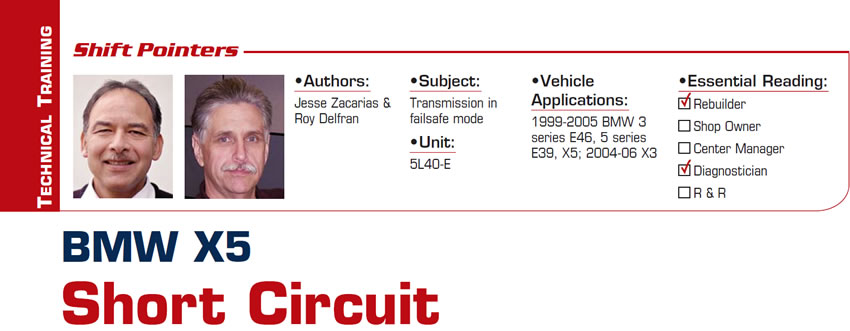
Valve-Body Reaming
When it comes to reaming valve bodies, there are always questions about how to approach things the “right” way. It pays to keep in mind that reaming a valve-body bore to allow installation of an oversized valve or sleeve is a precision operation and must be viewed with the mindset of a machinist. Properly maintained equipment, correct setup and the right cutting fluids are critical in achieving success. Here are a few suggestions we have compiled over the years in response to common inquiries.
